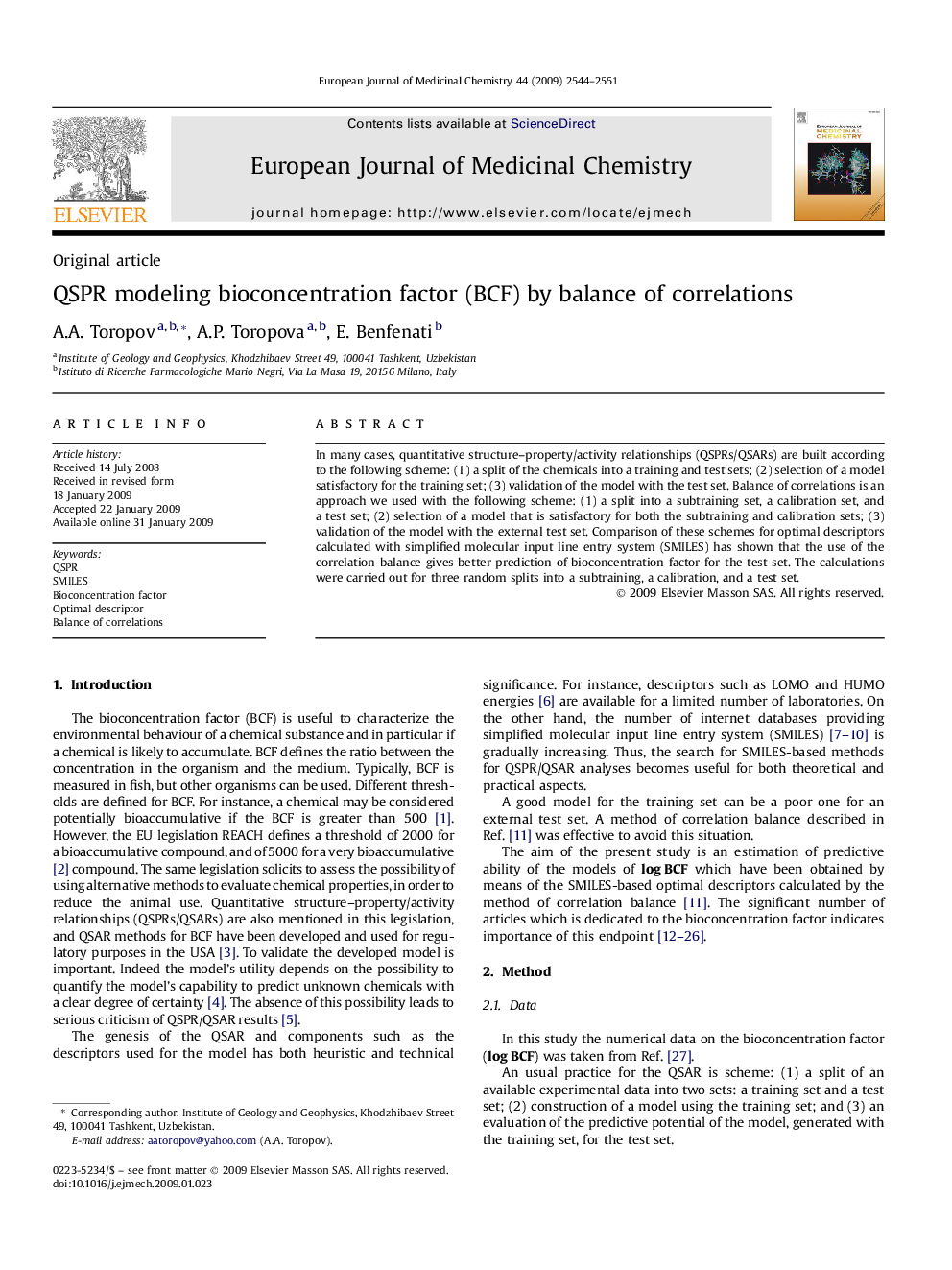| Article ID | Journal | Published Year | Pages | File Type |
|---|---|---|---|---|
| 1395053 | European Journal of Medicinal Chemistry | 2009 | 8 Pages |
In many cases, quantitative structure–property/activity relationships (QSPRs/QSARs) are built according to the following scheme: (1) a split of the chemicals into a training and test sets; (2) selection of a model satisfactory for the training set; (3) validation of the model with the test set. Balance of correlations is an approach we used with the following scheme: (1) a split into a subtraining set, a calibration set, and a test set; (2) selection of a model that is satisfactory for both the subtraining and calibration sets; (3) validation of the model with the external test set. Comparison of these schemes for optimal descriptors calculated with simplified molecular input line entry system (SMILES) has shown that the use of the correlation balance gives better prediction of bioconcentration factor for the test set. The calculations were carried out for three random splits into a subtraining, a calibration, and a test set.
Graphical abstractFigure optionsDownload full-size imageDownload as PowerPoint slide
